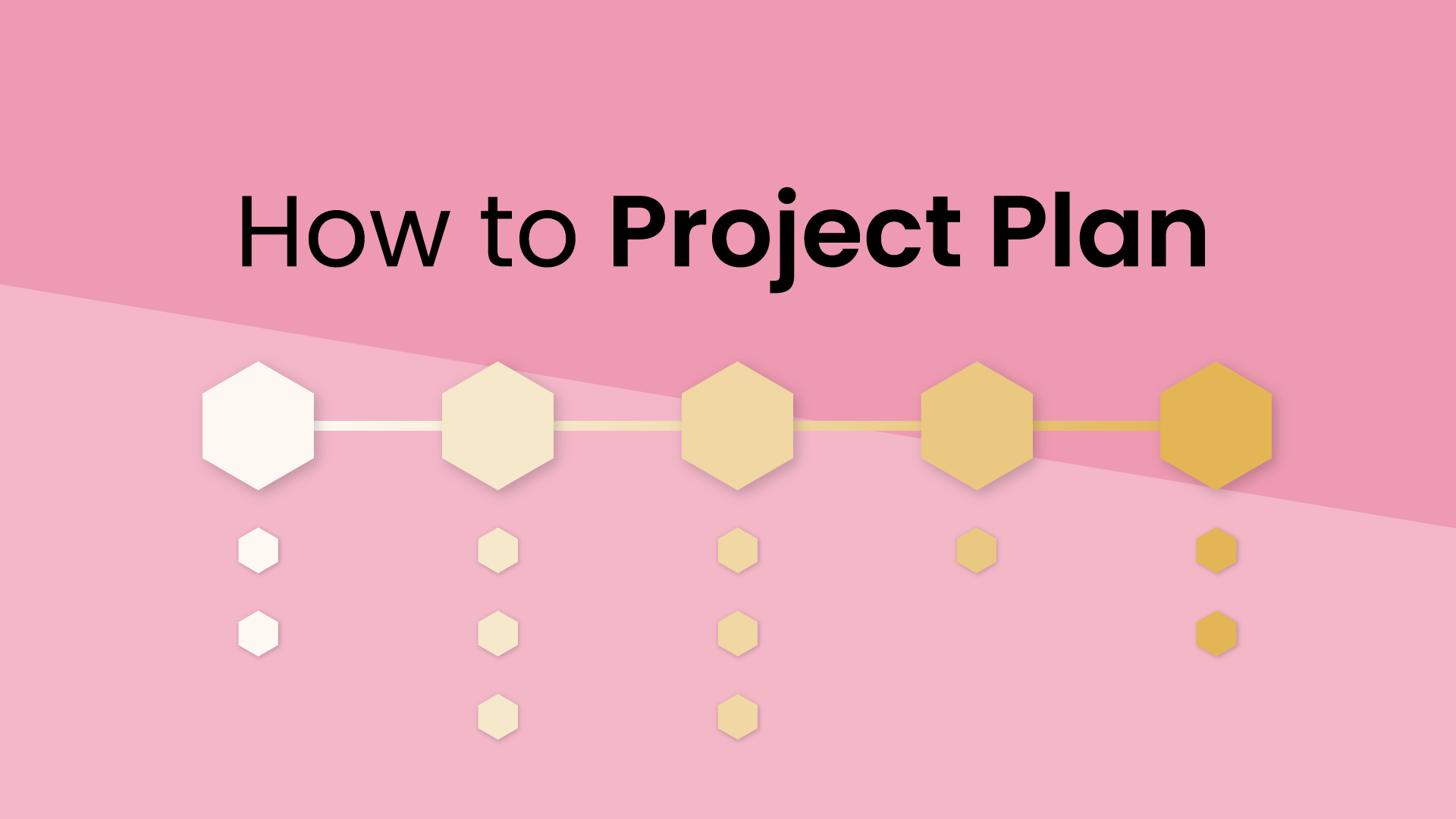

How often do you see projects go off the rails because nobody nailed down what it was supposed to achieve? It's a tale as old as time: unclear goals, mixed signals, and vague chats leading to disarray; not success. Projects often stumble simply because expectations and requirements weren't clearly captured.
When it comes to project management, only 52% of organizations create scoping documents, 48% baseline their project schedules, and only 64% engage in risk management. With these numbers, it should come as no surprise that 44% of workers experience abandoned projects.
Here’s the deal – a clear, thoughtfully written business requirements document, or BRD, can solve this problem. These documents are designed to give everyone involved a clear idea of where you're headed and how you'll know you got there. Without it, you’re risking wasted resources, missed deadlines, and grumpy stakeholders.
That’s why we’ve pulled together an easy guide to help you create an effective business requirements document that actually works. We’re talking the basics – figuring out your goals, getting everyone on the same page, and knowing what success looks like. And, hey, we’ve even created you a perfect starting BRD template (click here to jump right to it) that you can customize so you don’t have to start from scratch.
What is a business requirements document (BRD)?
A business requirements document (BRD) is a formal outline of a project's business objectives, expected outcomes, and business needs. A BRD is created before a project kicks off, and communicates exactly what the business aims to accomplish, why the initiative is necessary, and the challenges it addresses – always from a business perspective (rather than a technical one).
A BRD serves as the project blueprint, bringing together all necessary stakeholders, from the beginning. A tool they can use to steer both the planning and execution of the project. Without a detailed BRD in hand, teams face the risk of confusion, mismatches, misunderstandings, delays, and costly reworks.
When should you create a BRD?
Ultimately, you want to create your BRD as early as possible in the project lifecycle. These documents are your foundation before jumping into all the more technical details.
BRDs are super handy when:
- You’ve spotted a business need but haven't got all the details sorted yet.
- The higher-ups are backing a new big idea or project.
- You’re dealing with multiple teams or outside vendors.
- Big shifts in how you do business or follow rules are on the horizon.
- You're prepping to lock in buy-in, funding, or approvals.
Basically, whip up and continue updating your BRD whenever you need clear business goals to keep everyone aligned and on track.
What should a business requirements document include?
While the details might change depending on your industry or how complex the project is, you'll usually find these components in most BRDs:
- Executive summary: Brief overview of project's goals and challenges.
- Company/project overview: Description of the organization or project background.
- Project objectives: Clearly defined goals (e.g., increase customer retention, reduce cart abandonment).
- Needs statement: Explanation of the project's importance and alignment with strategy.
- Project scope: Definition of what's included and excluded in the project.
- Project requirements: Necessary conditions for success, including deliverables.
- Functional & non-functional requirements:
- Functional: System actions (e.g., secure password reset).
- Non-functional: System attributes (e.g., support for 5,000 users).
- Key stakeholders: List of involved stakeholders and decision-makers.
- Cost-benefit analysis: Overview of costs, returns, and value of the solution.
- Timeline & milestones: Key milestones, tasks, and deadlines.
How to write a business requirements document
Alright, so that's what a BRD is, but how does a project manager actually put one together? Don't worry, we won't leave you hanging:
1. Get stakeholders involved early
Rope in the key folks right from the get-go. Who are we talking about? Think project sponsors, end-users, business analysts, tech teams, and even sales or support squads.
How do you gather insights? Try out workshops, interviews, surveys, or discovery sessions. Getting this out of the way early allows you to catch different perspectives, priorities, and expectations.
2. Clearly define the project scope
Now, you need to get clear about what your project covers – and what it doesn’t. Everyone should be on the same page – otherwise, stakeholders can get confused, or unexpected changes/problems may arise down the line.
Clarify scope by answering questions like:
- What problem are we tackling?
- What tasks or features are must-haves?
- Are there set boundaries or exclusions?
3. Set clear, measurable goals
Get your business objectives nailed down using the SMART criteria (specific, measurable, achievable, relevant, time-bound). These goals should match what stakeholders care about and fit the big picture.
For example:
- "Boost monthly user sign-ups by 15% in a year."
- "Cut customer onboarding time by 30% in six months."
4. Lay out key functional & non-functional requirements
Start with the high-level stuff – save the nitty-gritty for a separate doc.
Functional requirements spell out what needs to happen, like "Enable secure password resets via email." Non-functional ones cover how it should run, like "Handle 5,000 users at once without slowing down."
5. Identify constraints, dependencies, & assumptions
Now is the time to document all the known constraints, dependencies, or assumptions that come with your proposed project.
You'll want to clearly document:
- Budgetary constraints: Financial limits or funding caps.
- Technological dependencies: Reliance on third-party systems or tools.
- Timeline constraints: Fixed deadlines or important milestones.
- Assumptions about resources: Availability of team members and technologies.
6. Conduct a SWOT analysis (optional, but handy)
A SWOT Analysis can really help get a grip on the project’s upsides, risks, and potential. Here's the gist:
- Strengths: Internal advantages of delivering the project successfully.
- Weaknesses: Internal limitations or gaps that must be addressed.
- Opportunities: External factors or scenarios the project could capitalize on.
- Threats: External challenges or risks that could negatively impact your project’s outcome.
7. Clearly define acceptance criteria
Acceptance criteria are the specific conditions a project needs to meet for it to be considered a success. They help everyone involved agree on what "done" means. As such, they must be clear and measurable. These transparent expectations will both guide the team and build confidence with stakeholders. For example:
- "Save unpurchased shopping cart items for return visitors to reduce cart abandonments by 20%."
- "During beta testing, 90% of users should finish onboarding in under two minutes."
8. Establish your project timelines & milestones
Now, you can start mapping out milestones and deliverables with a specific timeline to guide the project to completion.
For example:
- BRD finalized & approved: March 15
- Detailed functional requirements done: April 1
- Core system functionality ready: July 15
- User acceptance testing wrapped up: August 30
- Launch date: October 1
9. Break down the financials
Put together a clear summary of the financials: estimated costs, where the money's coming from, expected returns, and overall business value. The more transparency and information you can provide here, the easier it will be to secure stakeholder support and approval.
That said, you'll want to include:
- Estimated budget and spending plans.
- Funding sources (internal, external, grants).
- Expected ROI (like boosting revenue, cutting costs, or improving efficiency).
10. Get proactive about risks & make a plan for them
Flag potential risks early and spell out how to handle them for smoother sailing. Cover how you'll address issues like:
- Tech integrations or dependencies that might flop.
- Resource shortages or vendor hiccups.
- Schedule overruns or scope creep.
11. Get stakeholder sign-off
After all that hard work, you're finally ready for stakeholder sign-offs. Hold formal reviews with stakeholders to secure documented approval and buy-in. Use digital signatures or document meetings to make it official.
12. Manage BRD revisions & version control
Expect your BRD to evolve over time. Set up clear version control protocols using tools like Dropbox Paper, Google Docs, SharePoint, Jira, or Confluence. Keep track of when and why changes occur – your stakeholders will always appreciate transparency.
Benefits of a business requirements document
You know what a BRD is (and, now, how to create one), but why bother with all of that extra work? Well, skipping it can seriously derail projects – think failures, delays, wasted resources, and messy, expensive revisions. Let's take a closer look:
1. Brings clarity & focus
A BRD spells out the project's goals and main priorities, cutting down on any confusion. Everyone, from execs to developers, stays locked in on the clear outcomes and understands why the project matters and what success looks like.
2. Gets everyone on the same page
Projects will inevitably bring together different folks, each with their own views and expectations. A BRD aligns everyone, clarifying what's being delivered and sorting out uncertainties, leaving little to no room for any miscommunications along the way.
Companies that nail down their business requirements from the get-go dodge expensive mix-ups and delays.
3. Secures executive support
A well-crafted BRD makes it easy for execs to understand the project's context, vision, and value. With this in hand, it makes your chances of getting approvals, securing funding, and maintaining executive backing significantly easier.
4. Cuts down on delays & failures
Vague requirements can seriously trip up projects. But a BRD containing clearly defined requirements upfront helps spot and tackle issues early on.
5. Speeds up project implementation
When project details are passed clearly from the business team to the implementation crew, developers and designers quickly get the gist of what's needed. Less time spent clearing up details means faster execution and quicker project wrap-ups.
6. Manages resources & keeps costs in check
A clear BRD lays out resource, staffing, and budget needs so you can allocate wisely and cut down on waste. Without it, you might face budget overruns and extra expenses, hitting your bottom line hard.
7. Sets clear metrics for success & progress
Outlining measurable success criteria and KPIs in your BRD ensures everyone knows what winning looks like. This clarity lets teams track progress, measure outcomes, and hold folks accountable.
For example, if your project is upgrading customer support software, and you're doing so without clear metrics – like cutting wait times or boosting satisfaction scores – you can't really gauge how effective your project is.
Business requirements document template

Achieve more project success with BRDs 🚀
A solid BRD is your ticket to smoother projects and a happier project team. With clear objectives and aligned expectations, you’re set to tackle any challenge that comes your way.
But why stop there? To keep your project management on point, consider using Reclaim.ai. It’s an AI-powered scheduling and productivity tool that intelligently prioritizes tasks and helps manage team calendars, so you never miss a deadline. It can easily slip right into your workflow, giving you the structure to keep projects on track and aligned with your goals – your go-to tool for keeping things running smoothly.
Trend Reports
Ready for an
AI calendar?
Auto-schedule focus time, meetings, & breaks on Google Calendar + Outlook Calendar.
Start scheduling →It's free! 🎉




















